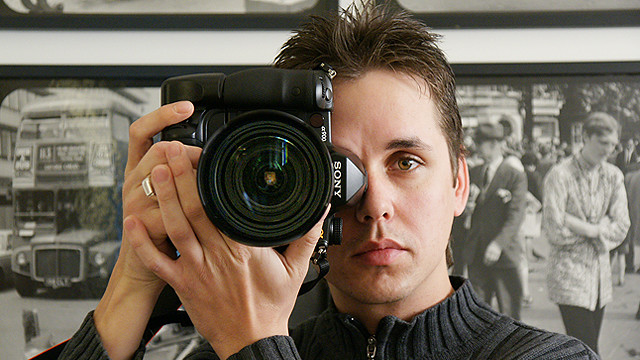Ever been underwhelmed by your photos? Tired of just producing happy snaps? Here are 4 easy ways to ramp up your creativity and help you produce photos you are proud of - even with a simple point and shoot digital camera.
1. Composition
This is the most important consideration; if you want your photos to engage people they must make a deliberate statement. Even a simple point and shoot camera will take care of the technical aspects of photography for you - it is your job to take care of the art.
- Look at the scene the way your camera will - in 2D. Close one eye and use your fingers to frame the scene. Now that you no longer see in 3D is the scene still interesting, or is it just a jumbled mess? What jumps out at you? What makes the scene interesting? Certain characteristics will act as focal points, attracting the eye first: bright colors, warm colors, sharp contrast, brighter illumination, off-centre, isolation, and, of course, human faces. These are the sorts of things you want to fill your frame with while keeping extraneous details out of the corners.
- Change your perspective: move forward or back with your feet as well as with the lens, left or right, outside or inside, above or below, in front or behind.
- What do you want to emphasize? If breadth and distance, then frame your scene horizontally. If lines and height, use vertical or portrait framing.
- Divide your frame into thirds, both horizontally and vertically. To emphasize the foreground put the horizon on the top third line. To emphasize the background or distance put the horizon on the bottom third line. Put your subject on one of the four "sweet spots" where the horizontal and vertical lines intersect as the viewer's eye is automatically drawn to those 4 spots.
2. Exposure Compensation
Lighting is critical to getting a great photo. Your camera tries to determine the average lighting across the scene but in fact the lighting may vary wildly from point to point. Your lighten/darken control is the EV (+/-) adjustment. It allows you to tweak the camera's automatic exposure setting to allow for factors you are aware of but the camera is not.
For example, in reflective settings such as very bright sunlight or bright snow the camera is likely to be overwhelmed. Take back control with a a setting of EV-1 to slightly underexpose or darken the scene and see if that helps. Keep adjusting the EV control until you are satisfied with the result.
If your subject is backlit or the day is overcast or you are shooting indoors you may need to overexpose or lighten the scene. Try EV+1 and experiment from there.
3. White Balance
Our eyes automatically adjust the light we see so that it appears white. Your camera, on the other hand, sees the light that is truly there. The automatic setting of your camera performs it's best guess to make the light that looks white to our eyes, white in the photo. You, however, can adjust the white balance yourself to great effect, either correcting it to produce a neutral effect or using it to enhance the colors in the scene.
You can do this by setting the white balance manually, following the directions for your camera. You also have the option of using one of several presets which provide different levels of cool or warm tones. The daylight setting is slightly blue, whereas tungsten is very blue to compensate for the warm light cast by these globes. Cloudy produces an effect slightly warmer than daylight, flash is slightly warmer again to compensate for the cool light of the flash. Shade is very orange to counteract the blue light of shadows. The fluorescent setting is purple to compensate for this lighting's green cast.
Experiment with each preset and see which produces the prettiest result for you - it may be that you prefer something other than the "correct" setting for the lighting you are in. For instance, you may prefer a warmer preset to get more natural skin tones or to bring out the reds in a landscape.
4. A Steady Hand
Use autofocus to reduce shutter lag and therefore the likelihood of moving the camera before the shot has been taken.
Line up your subject in the centre of the frame and half press the shutter button. Allow the camera to adjust its settings to give you the perfect shot, then, with finger still on button, move the camera and recompose the shot. Align the subject on one of the above mentioned "sweet spots" then press the shutter all the way while holding the camera steady for the brief time needed to take the photo.
Using these 4 tips will help you take photos that you can be proud of - even when using a simple point-and-shoot camera. Experiment. Play. Digital film is free after all, and you can always delete the mistakes.
